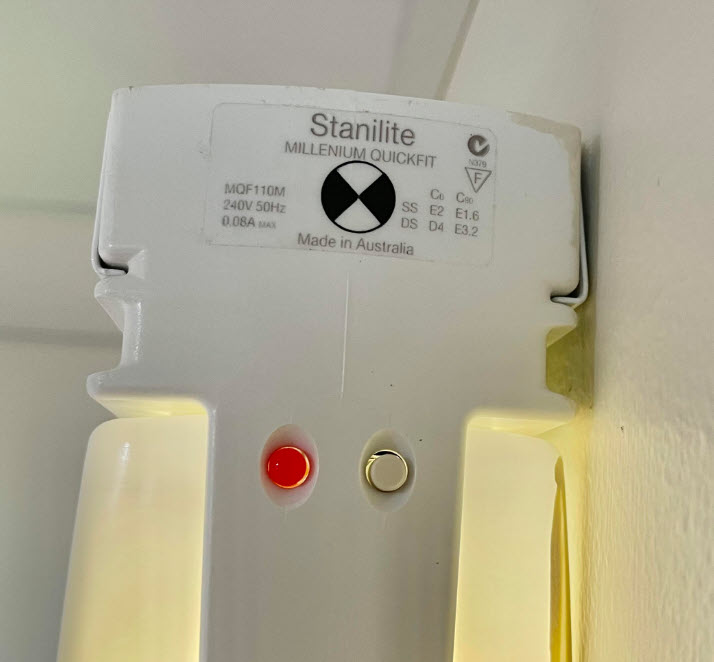Search Results:
Search Results:
Search Results:
Search Results:

Emergency exit lights are required in most commercial buildings and workplaces to ensure the safety of all staff and customers during a fire or power outage emergency.
This post will discuss typical methods to test and maintain an emergency exit light.
Sparky Direct Pro Tip: There is a push-button test switch on each emergency or exit light fitting (near the LED indicator) - push this button in, and the loss of power will put the emergency light into emergency mode

As per Australian and New Zealand Standards AS/NZS2293, every six months, all exits and emergency lights must be tested to ensure they will run for 90 minutes on battery in the event of a power loss. The duration test results, any defects/non-conformances, and maintenance history must be recorded in a logbook.
There are three ways of testing the exit and emergency light fittings, and it depends on how the original fittings were or are to be installed in the building.
Clean the emergency light fittings every six months with a clean cloth and a mild cleaning agent. Remove cobwebs, spiders and other insects that may like making a home in these illuminated boxes.
Inspect the emergency light fittings for damage or wear and tear. If the emergency light fittings are damaged or worn, replace them.
If the emergency light fitting or exit sign is damaged and does not last the 90-minute test, you may need to replace it. This could mean replacing the battery and light tube or LED strip, or it could be quicker and more cost-efficient to replace the damaged fitting with a completely new fitting.
A client must factor in the time taken to replace the parts, the ability to source spare parts, the labour costs to exchange the part compared to replacing the complete fitting.
Yes, since 2006, Australian Standards have required that the circuit for new or modified Exit and Emergency Lighting systems be separate from the general lighting.
Yes, the emergency and exit light fittings must be hardwired to their own designated circuit.
No, standard electrical insulated cable is sufficient for most small commercial applications. Please check with your local authority and electrician before choosing the cable type for the installation.
This article concludes that emergency exit lights should be kept in optimal working conditions at all times. This includes checking the lightbulbs, cleaning the lens, and checking the wiring. If any of these are not working or have failed, the emergency exit light should be replaced.
An emergency exit light is a critical piece of safety equipment. By following these simple steps, you can ensure that the light is working correctly and will be there when you need it most.
Learn more about Exit & Emergency Exit Signs in our updated blog post.